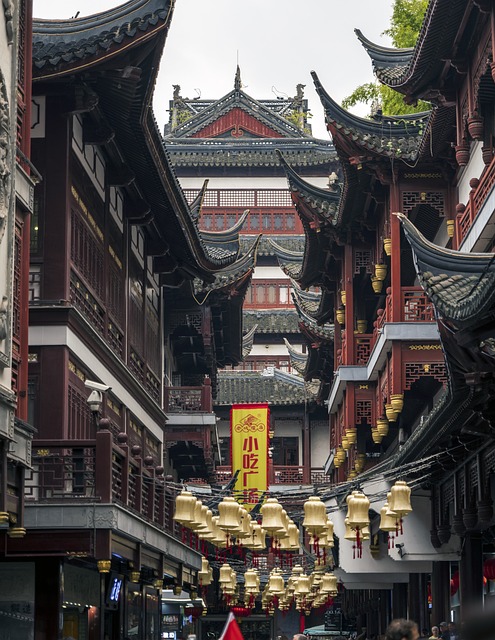Sustainable roof design, driven by the integration of permeable materials, offers a holistic approach to environmental stewardship. Green roofing systems, enriched with organic matter, naturally filter rainwater, enhancing water quality and aiding groundwater recharge. These eco-friendly solutions mitigate stormwater runoff, reducing flooding risks and benefiting local ecosystems. Solar-integrated designs combine permeable substrates with photovoltaic panels, providing energy-efficient, space-saving urban solutions while promoting environmental sustainability through green roof installation. This innovative approach to roofing not only reduces carbon footprints but also contributes to the overall health of urban ecosystems.
Permeable Materials for Enhanced Water Management: Revolutionizing Urban Spaces
The urban water cycle poses significant challenges, from stormwater runoff and flooding to water quality issues. Green infrastructure, particularly permeable surfaces, offers a sustainable solution. This article explores how permeable materials can transform urban landscapes, focusing on their role in improving water management. We delve into the benefits of sustainable roof design, including green roofing systems, and examine various eco-friendly materials. From energy-efficient roofs to solar-integrated innovations, this guide provides insights for a greener future, addressing environmental concerns through innovative and practical solutions.
# Blog Post Outline: Permeable Materials for Enhanced Water Management
Permeable materials are revolutionizing water management in architecture and construction, particularly with their application in sustainable roof design. These innovative solutions offer an eco-friendly alternative to traditional roofing, addressing the growing need for green roofing systems. By allowing water penetration, permeable materials reduce runoff and contribute to more efficient water usage.
Solar-integrated roof designs that incorporate these materials are gaining popularity as energy-efficient options. Not only do they minimize environmental impact, but they also provide a long-term solution for urban water management problems. Green roof installations utilizing permeable substrates can significantly enhance the sustainability of buildings, making them more environmentally friendly and contributing to the overall health of urban ecosystems.
1. The Role of Permeable Surfaces in Urban Water Cycle
In urban areas, permeable surfaces play a pivotal role in shaping the local water cycle. Traditional hardscaping, characterized by concrete and asphalt, contributes to urban heat islands and rapid surface runoff, overwhelming drainage systems. In contrast, sustainable roof design incorporates eco-friendly roof solutions like green roofing systems that allow rainwater to infiltrate and be absorbed into the soil. This natural process not only reduces the strain on municipal water management systems but also helps mitigate flooding events.
Green roofing systems, with their sustainable roofing materials, offer an innovative approach to urban water management. By integrating energy-efficient roof designs and solar panels, these systems further enhance environmental benefits. The water absorbed by the soil is then filtered naturally, improving local water quality. This holistic approach to roofing not only promotes a greener environment but also contributes to a more resilient and environmentally friendly urban landscape.
– Understanding urban water management challenges and the importance of green infrastructure.
– Explaining the concept of permeable materials and their impact on reducing stormwater runoff.
Permeable materials are revolutionary in their approach to water management, especially in urban areas. These innovative solutions allow water to infiltrate and soak into the ground, significantly reducing the volume of stormwater runoff. By incorporating permeable surfaces into roof designs, such as sustainable roofing materials or green roof installations, buildings can contribute to a more eco-friendly and sustainable environment. This natural process not only minimizes the strain on drainage systems but also provides numerous ecological benefits.
The concept aligns perfectly with modern architectural trends towards energy-efficient and solar-integrated roof designs. Green roofing systems offer an opportunity to create vibrant, eco-friendly roof solutions that enhance biodiversity while providing insulation and reducing heat islands in urban spaces. With proper planning, these permeable materials can contribute to a city’s overall water management strategy, ensuring a more balanced and environmentally conscious approach to urban development.
– Highlighting the environmental benefits: improved water quality, recharging groundwater, and mitigating flooding.
The use of permeable materials in sustainable roof design offers a promising approach to enhancing water management practices while promoting environmental sustainability. Green roofing systems, incorporating eco-friendly roof solutions like organic matter and specialized media, allow rainwater to soak in and be filtered naturally. This process significantly improves water quality by removing pollutants before it enters drainage systems.
Moreover, the integration of these systems can contribute to recharging groundwater supplies, as water percolates through the soil and reaches aquifers. Additionally, by slowing down stormwater runoff, green roofing can mitigate flooding events, benefiting nearby ecosystems and infrastructure. Solar-integrated roof designs, utilizing permeable materials alongside photovoltaic panels, further enhance the environmental benefits, creating energy-efficient and space-saving solutions for urban areas.
